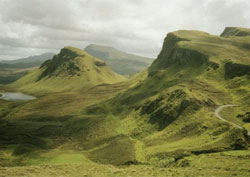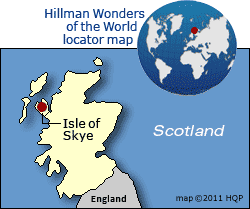Isle of Skye
 Why the
Isle of Skye
is special
Why the
Isle of Skye
is specialThis vacation destination in Scotland is celebrated for its raw natural beauty, old ruins, and Gaelic heritage.
Isle of Skye tips and insights
Geography in brief
It is the largest and most scenic of the many Inner Hebrides Islands. A 1995 bridge connects it to the Scottish Mainland.
The Isle of Skye's two most iconic features are:
- Black Cullin
These picturesque jagged-ridged mountains run down the middle of the island, commanding the skyline. The Cullin Hills (as they are also called) are popular with climbers and nature walkers.
- Sea Inlets
They're so long and numerous that the shore line of this 80-kilometer (50-mile) long island measures nearly 500 kilometers (350 miles) in length.
The Isle of Skye is short on what some travelers define as a "travel attraction". Here, it's about enjoying natural scenery such as the Black Cullin peaks and the soaring Old Man of Storr pinnacle. It's not about resorts, clubs, restaurants, and sunny beaches.
When to come
The Isle of Skye weather is typically windy, cloudy, and rainy - and changeable on short notice. Mid-April to mid-June is the best-bet period for minimizing those conditions.
Note: The average summer temperature high is jacket cool and the average winter low is a tad above freezing.
Location in Scotland



